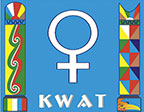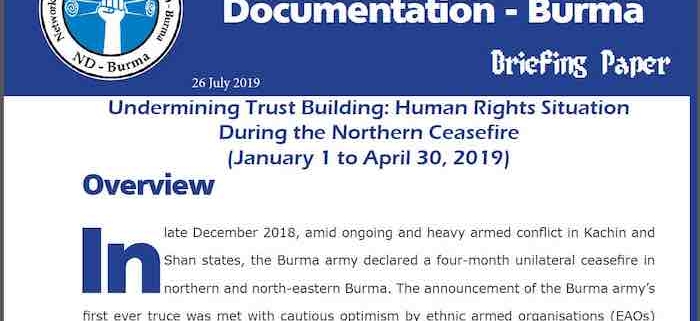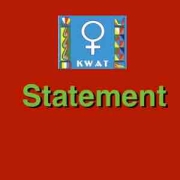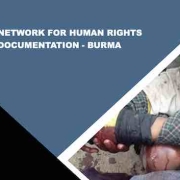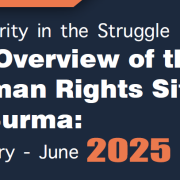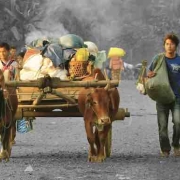Undermining Trust Building: Human Rights Situation During the Northern Ceasefire
In late December 2018, amid ongoing and heavy armed conflict in Kachin and Shan states, the Burma army declared a four-month unilateral ceasefire in northern and north-eastern Burma. The announcement of the Burma army’s first ever truce was met with cautious optimism by ethnic armed organisations (EAOs) and welcomed as a constructive gesture by many observers and analysts of the peace process.
The ceasefire, which extended to five military command regions, including conflict zones involving, among others, Northern Alliance members the Kachin Independence Army (KIA), the Ta’ang National Liberation Army (TNLA) and the Myanmar National Democratic Alliance Army (MNDAA), was renewed for two months at the end of April 2019 after a
period of intense uncertainty.
However, despite this overture, the Burma army has continued to engage in armed clashes with EAOs in Kachin and Shan states, while establishing new military camps throughout the region. Indiscriminate gunfire, artillery attacks and aerial bombardments by Burma army soldiers against EAO positions over the initial four-month ceasefire and its renewal
have led to villager deaths, injuries, displacement and increasing militarisation by Burma army forces.
Ongoing offensives by the Burma army in Shan and Kachin states as well as the exclusion of the Arakan Army (AA)—the fourth member of the Northern Alliance—from the ceasefire despite heavy fighting in Rakhine and Chin states and the urging of their inclusion by its Northern Alliance allies, have marred the ceasefire’s implementation and undermined any
meaningful dialogue meant to reinvigorate Burma’s floundering peace process.
Download English
